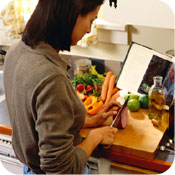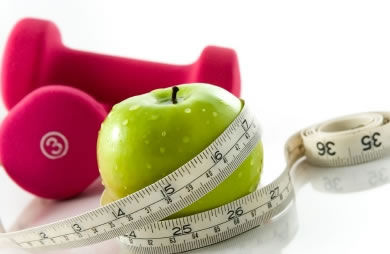 Whether you're overworked or just plain overstressed, time is valuable to all of us. When making a lifestyle change, it can easily seem overwhelming to include new habits like exercise and healthy eating into your jam-packed days. Between work, school, family and just keeping up-how are you also supposed to find time to prepare healthy meals and read all those labels in the grocery store? These tips will help you spend even less time in the grocery store, emerge with healthy ingredients, and cook healthy meals in minutes.
Whether you're overworked or just plain overstressed, time is valuable to all of us. When making a lifestyle change, it can easily seem overwhelming to include new habits like exercise and healthy eating into your jam-packed days. Between work, school, family and just keeping up-how are you also supposed to find time to prepare healthy meals and read all those labels in the grocery store? These tips will help you spend even less time in the grocery store, emerge with healthy ingredients, and cook healthy meals in minutes.
Keeping a grocery list may seem like a waste of time in the moment, but it will actually save you time while shopping. While any old list is better than none, here are some tips that will turn your list into time well spent. 1. Keep a running list. One of the best places to keep your grocery list is in the kitchen-on the fridge, on a bulletin or wipe board, or even on the pantry door. As you run out of items, add them to the list so you don't have to remember them later. Then when you're ready to shop, you'll have a complete shopping list ready to go with you. 2. Organize your list. You can get through the store quickly if you organize your list in the same order that you typically navigate the grocery store. If you always start in the produce section, then start your list with these foods. If you hit the dairy section last, then add those foods to the bottom of the list. By listing items in order of the store layout, you can avoid retracing your steps to pick up things you missed. 3. Shop during "off" hours and days. You can usually get in and out of the store more quickly if you shop between Sunday and Wednesday, later in the evenings, or during the middle of the day, such as your lunch hour. 4. Avoid shopping when you are hungry. Studies show that when hungry people shop, they are more likely to purchase items that aren't on their lists. When your belly is growling, you're more likely to stray off of your list, notice other foods that you didn't come in to get, and spend extra money overall. Try shopping after a meal or a small snack to stay focused and on track. 5. Use caution with single-servings and bulk items. Many times when you shop, the choice of individual or bulk sizes means the difference between time and money. Individual serving items (such as yogurt, instant oatmeal, 100-calorie packs, frozen entrees, etc.) and pre-cut foods (chopped veggies and fruits, whether frozen or fresh) tend to be more expensive than larger packages or bulk quantities, but they will save you time and help with portion control. If money is of greater concern then time, select standard food packages (such as a tub of yogurt, a canister of oatmeal, a box of crackers, etc.). With just a few food storage containers of various sizes, you can portion out your snacks and meals for later convenience. It only takes a few minutes to prepare snacks and portions for a whole week, but you'll save lots of money in the end. Now that you have the ingredients on your list, here are some quick and healthy cooking ideas. These meals pack fiber, veggies and protein into a quick-cooking (and flavorful) meal. Whether you're cooking for one or a family of four, you can adapt the quantities of ingredients to suit you.
Getting healthy doesn't have to be time-consuming or expensive. With a little planning and a few meal ideas, you can easily find the time to make nutritious, home-cooked meals that you and your family will love. |
Too Busy to Eat Healthy?
Shopping & Cooking Tips for People On-the-Go
Page 1 of 1






Member Comments